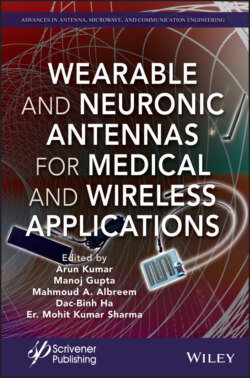Читать книгу Wearable and Neuronic Antennas for Medical and Wireless Applications - Группа авторов - Страница 15
1.3 System Model
ОглавлениеIn the FBMC-OQAM transmission, various processes are involved, as shown in Figure 1.1.
Figure 1.1 FBMC-OQAM transmission system.
It can be seen from Figure 1.1 that the FBMC-OQAM transmitter consists of a first block of bits to symbol mapping, which is followed by a OQAM processing block that modulates the symbols using OQAM mapper. Next, the IFFT is taken after converting data from serial to parallel. Finally, the data is transmitted through the channel by converting it again to serial transmission. The FBMC receiver has reverse processing of transmission blocks, as shown in Figure 1.2.
Figure 1.2 FBMC-OQAM reception system.
The transmitted basis pulse for the lth sub-carrier and kth symbol gl, k (t) is defined as:
(1.1)
Where p (t) is the prototype filter, F is the subcarrier spacing, and T is symbol spacing in time. The sampling rate is evaluated by fs = 1/∆t = FNFFT, where NFFT ≥ L. Here, NFFT is used to show the FFT size. The sampled basis pulse gl,k(t), can be expressed as vector gl, k ∈ CN × 1, given by
(1.2)
with
Next, by combining all the vectors in a matrix G ∈ CN × LK, given by,
(1.3)
(1.4)
and by representing the combined data vector for all the transmitted symbols as vector x∈ CLK × 1,
(1.5)
(1.6)
we can write the combined sampled transmit signal S∈ CN × 1 as
(1.7)
The impulse response under multipath fading in a time-variant channel can be expressed as matrix H∈ CN × N, whose entries are given by [2],
(1.8)
Finally, the received symbol is projected using received waveform to obtain
(1.9)
where n represents the additive noise term which is usually modeled as Gaussian random variable.
